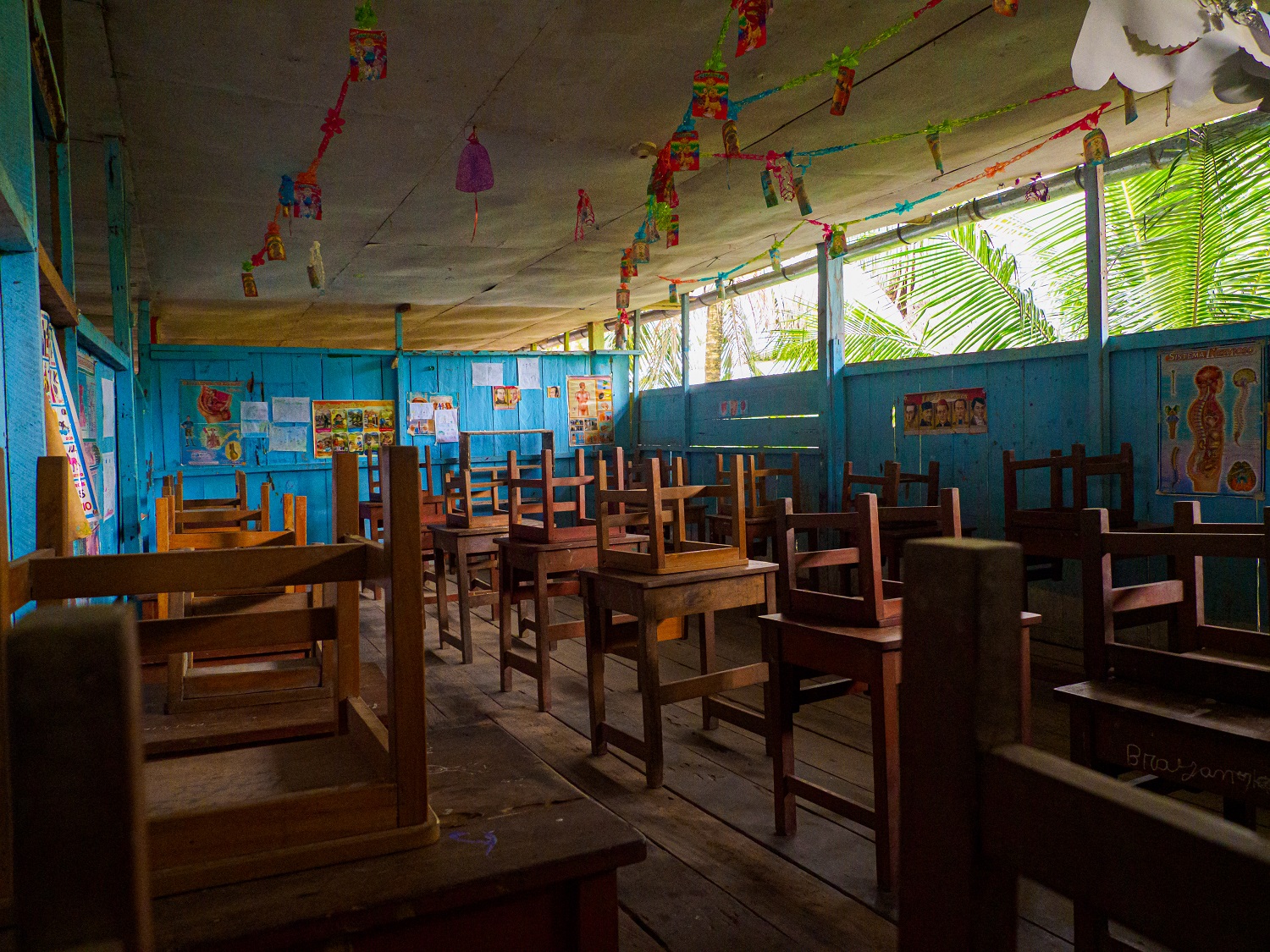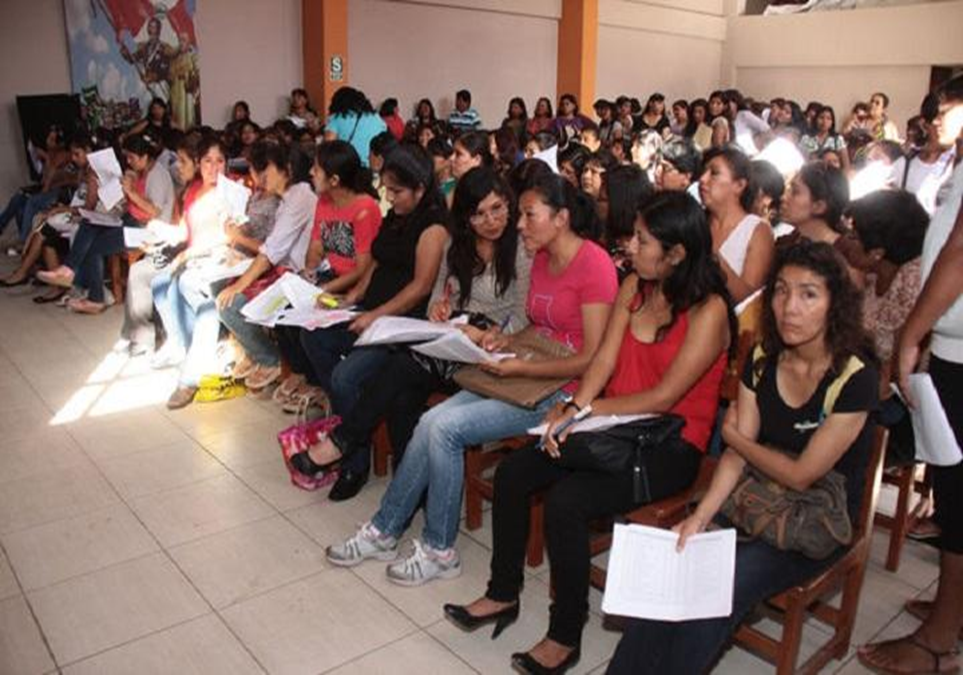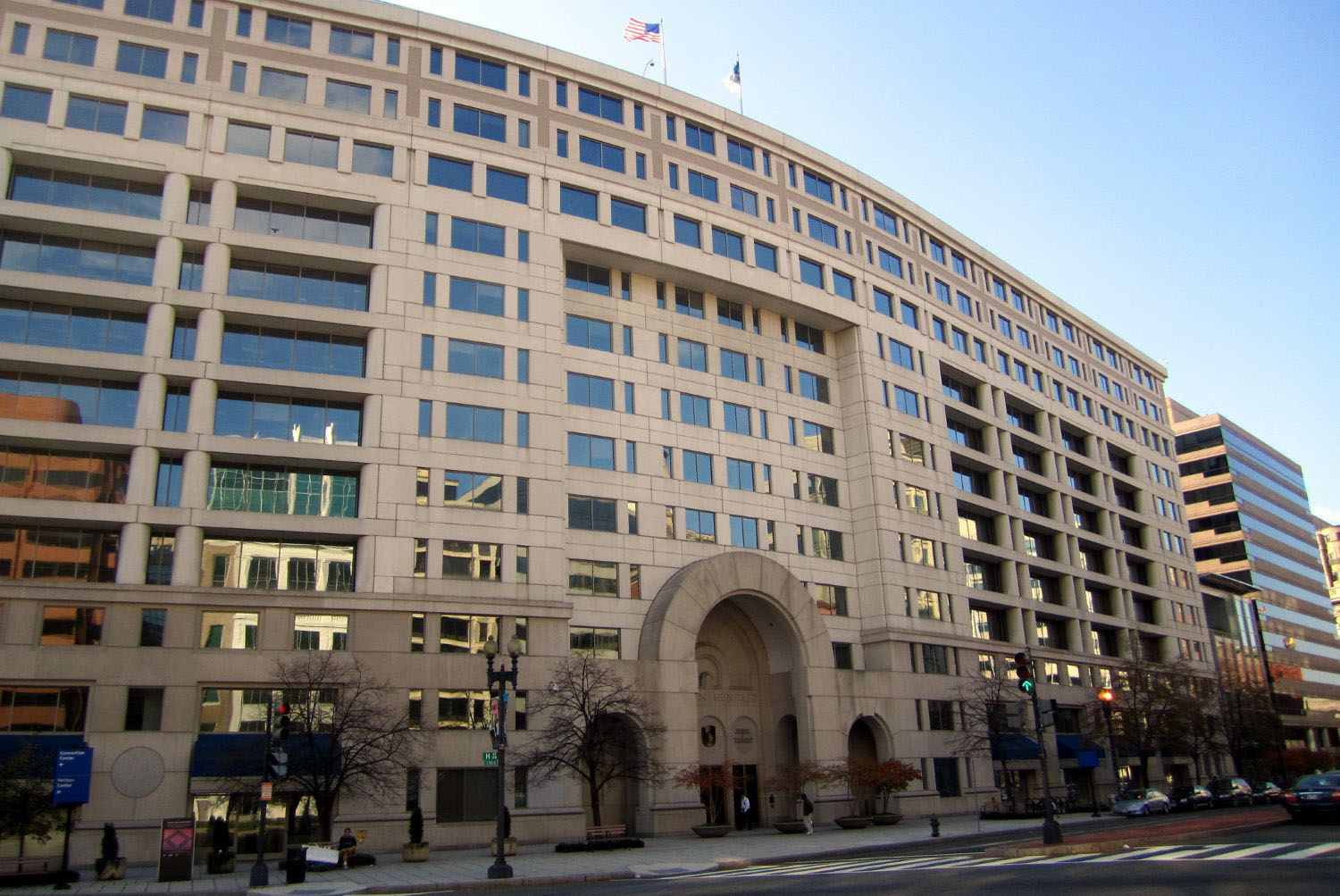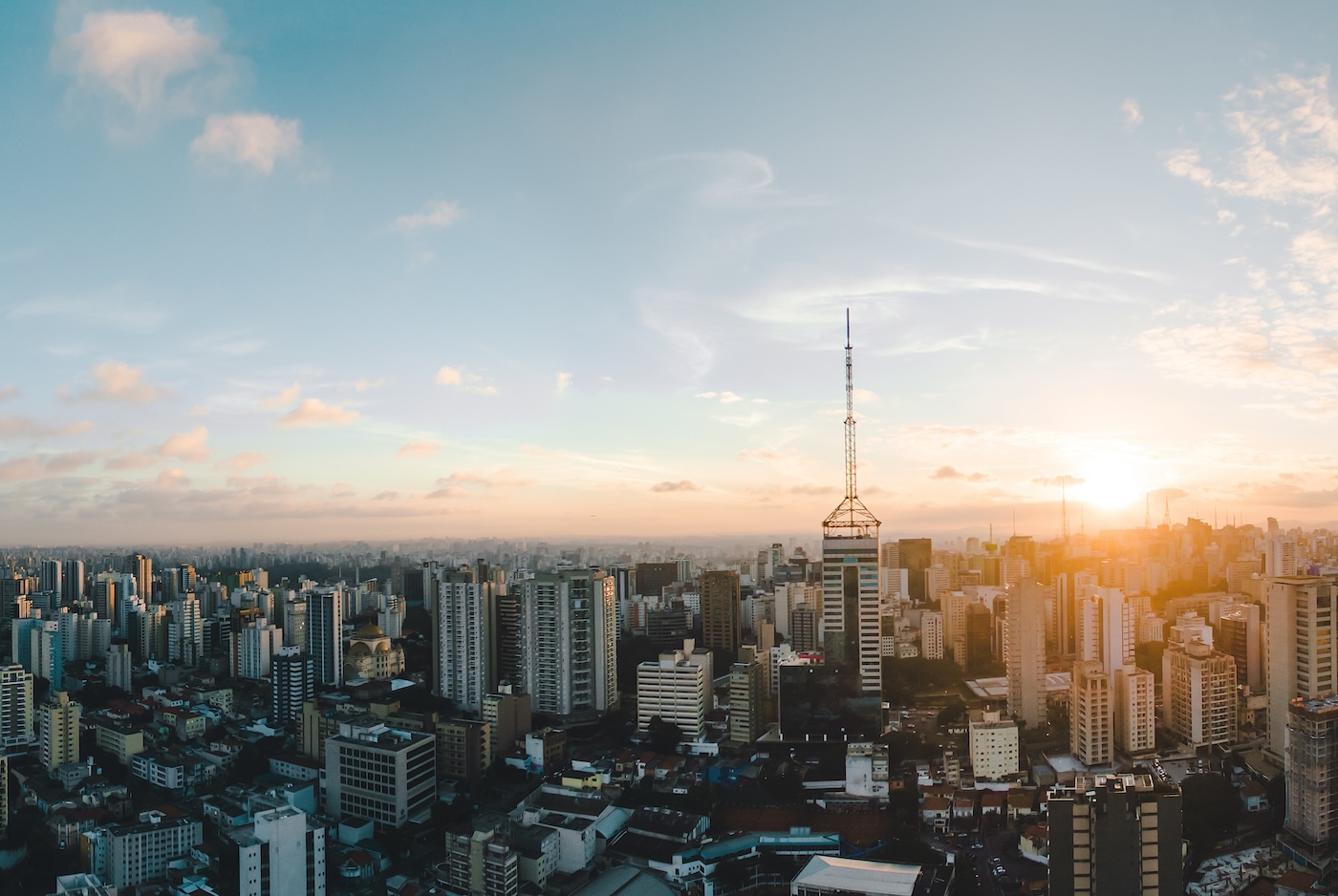Recommended
It is now 10 years since Jaime Saavedra became the education minister of Peru and 7 years since he left that position, after serving for two different presidents. That is enough time for policies and programs his administration launched or implemented to have borne fruit, achieved objectives, or—as is too often the case in education—been reversed. It is also enough time to reflect on what Peru has achieved in education over the past 15 years, what else might have been done, and how politics affected both. Ben Schneider and I were lucky to have the chance to write a new paper with former Minister Saavedra that captures these reflections.
Peruvian teacher candidates waiting to take the national test for permanent positions (nombramiento)
Peru’s education gains have been substantial. The country has achieved high levels of enrollment and completion in basic education and, for over a decade, has been able to focus on a learning agenda. There also, the achievements have been significant: Peru was the only country in the Latin America and Caribbean region to raise PISA scores (15-year-olds) from 2015 to 2018. Peru’s learning gains on PISA between 2009 and 2018 represent one additional year of content mastery in language and math. Peru improved more than any other country (among 16 countries) from 2013 to 2019 on the Latin America regional assessment ERCE—with large gains in all domains (reading, math, and science) at both the 3rd grade and 6th grade levels. It is impressive that progress was driven by lowering the share of students at the lowest performance levels and that Peru’s overall performance is now above the regional average.
These learning gains and concomitant development of a high-caliber technical team in the Ministry of Education over the period to 2020 make the disruption to education policy and progress since then distressing. The pandemic, coupled with political instability driving the rapid succession of four education ministers from 2020 to 2023, made Peru’s education management during the pandemic one of the most ineffective in the region. Public schools were closed for a full two years (one of the longest periods in the region), and efforts to support distance learning were piecemeal and failed almost entirely to address the needs of rural students. While there are no data yet on Peru’s learning losses due to the pandemic, they are doubtlessly substantial.
But the exceptional circumstances of the pandemic do not negate the value of reflection on Minister Saavedra’s time in office and what he has learned about education policy and education politics by watching the country’s progress after his tenure.
An ambitious agenda for reform
Saavedra’s agenda as minister combined system-wide reforms and targeted, well-implemented complementary programs, against a backdrop of sustained economic growth and strong support from three successive presidents (Garcia, Humala, and Kuczynski) that provided the fiscal space for higher spending and ambitious reforms. His administration innovated and implemented many programs, from a school bonus program to scholarships for top high school students to become teachers, to a teacher mentoring program, to a special bonus for rural teachers. He also established an innovative partnership with MIT’s Joint Poverty Action Lab to conduct rigorous, third-party evaluations of programs’ impact, in what the ministry team called MINEDLAB. Many of these programs are described in detail in the chapter by Saavedra and Gutierrez in the book Audacious Education Purposes, edited by Fernando Reimers. Evaluations that have emerged more recently confirm the positive impacts of many initiatives, notably the rural teacher bonus program and the teacher mentoring program.
Peru’s experience with major, system-wide reforms to raise teacher quality is the focus of our paper. Very few developing countries have adopted systemic reforms as sweeping as Peru’s, and Saavedra’s administration was central to their design and implementation. He had three overriding priorities as education minister. The first was to implement the comprehensive 2012 law aimed at transforming the teaching profession from a low-prestige, relatively underpaid career that did not attract the country’s most academically talented students into a meritocracy with a more attractive career path, higher salaries, hiring based on academic talent, and promotions based on performance. In a recent paper, Giuliana Espinosa and Liliana Miranda provide an excellent, detailed, insider’s analysis of the design and implementation of the teacher screening process at the heart of the reform. A recent IDB analysis confirms better subsequent teaching performance by those who passed the screening process.
Saavedra’s second priority was developing a coherent new curriculum to build the academic competencies and values students need for a 21st century economy and a more equitable society. Saavedra and colleagues in the ministry are rightly proud of the development process, which involved extensive consultations with teachers, school leaders, and academic experts that UNESCO has labeled international best practice. The result is a coherent curriculum with a strong emphasis on foundational skills, supported with high-quality teaching and learning materials.
The third priority, reforming higher education, including teacher training institutions, turned out to be the most politically contentious—in part because of the large, profitable private higher education sector that was launched during the Fujimori administration and became increasingly difficult to regulate. With the benefit of hindsight, one of the most important lessons of the past decade is that efforts to raise teacher quality depend crucially on progress in raising the selectivity and quality of teacher preparation schools
The lessons of Peru’s experience
Some caveats are in order about the “lessons” that follow. There are many countries where they are not applicable. First, Peru and Latin America more broadly have achieved high levels of enrollment and graduation rates and no longer suffer from the acute shortage of teachers seen in other regions, notably sub-Saharan Africa. Second, part of Peru’s political history is unique: an autocratic presidency in the 1990s that left some very entrenched policies—such as a virtually unregulated private education sector—and entrenched politics, with a strong repudiation of the Fujimori name and era.
Over the past two decades, other Latin American countries have also sought to raise teacher quality with system-wide reforms and some of Peru’s lessons stem in part from the comparative experience of those countries. Ecuador and Chile, like Peru, have significantly raised teacher salaries to make the career more attractive, raised the standards for teacher hiring, and made promotions contingent on performance. But, unlike Peru, they have complemented these reforms with actions to increase the selectivity of entry into teacher education institutions and regulate and raise the quality of pre-service education. Against that backdrop, we try to distill Minister Saavedra’s experience and Peru’s education trajectory since then into seven lessons. All of these are discussed in more detail in our paper.
Minister Saavedra’s tenure involved bold attempts to raise the quality of both university and non-university higher education institutions. A 2014 Higher education reform took on the challenge of reining in private sector institutions that by 2014 had grown to cover 77 percent of overall higher education enrollments, meeting the demand for higher education from Peru’s burgeoning pool of secondary school graduates but through schools characterized by low admissions requirements and low costs for students but high profitability for owners. Core elements of the 2014 law included the requirement of transparent data on student enrollments, faculty numbers and qualifications, and costs, profit and loss data; these created a political uproar in a sector that had been unregulated for decades, and where some of the largest institutions (or networks of schools) were owned by political figures.
Conflicts over the 2014 law were exacerbated by Keiko Fujimori’s political alliance with key private university owners after her loss to Pedro Pablo Kuczynski in a close 2016 presidential election and led to congressional action against Minister Saavedra, and subsequently against his successor, Minister Martens. This period not only sapped the time and attention of the ministry; it also derailed strong actions to implement a corresponding law aimed at improving the quality of public, non-university higher education institutions where most teachers are prepared. The 2016 Ley de Institutos set out criteria for evaluating the quality of these institutions and reducing their overall numbers by weeding out lower-quality ones. This law aimed at the same actions taken to raise the quality of teacher preparation in Ecuador and Chile, but without a ministerial team empowered to concentrate on its implementation and, subsequently, with delays due to the pandemic.
Reflecting on his own experience and Peru’s reform trajectory, former Minister Saavedra has drawn the following lessons:
-
Systemic teacher policy reforms are essential for better teaching and learning, but they take time to bear fruit and must be accompanied by programs to support the current teaching force.
-
Talented teachers are wasted unless the curriculum they teach is coherent and designed to develop the values, socio-emotional skills, and academic competencies relevant to a 21st century workforce and society.
-
For teachers in service, targeted mentoring programs are more effective than traditional large-scale, center-based training events, and if mentoring is reinforced by training to equip principals to support better teaching in their schools, the impacts are multiplied.
-
A core goal of teacher reform is to attract smarter and more motivated teachers, but if the only filter for quality is a test at the point of hiring, pass rates will be very low, some civil service positions will remain unfilled, and the share of teachers who remain on temporary contracts can become a political issue.
-
Filters for teacher quality at the point of entry into teacher training, action to raise the quality of the training itself, and “exit tests” near the end of teacher training can raise the quality of the candidate pool at the point of hiring and make civil service positions accessible to a higher share of (higher quality) applicants.
-
Reforms to regulate the quality of teacher training and higher education more generally can be politically contentious in contexts where a large, profitable, low-cost/low-quality private higher education sector has developed, as in Peru and Brazil
-
Reforms aimed at raising education quality can inspire support from the true beneficiaries of education—students and their families—who are typically too dispersed to organize as a political force.
Clearly, the story of education reform in Peru has unique political elements, but it also points out verities that can benefit other countries. It is reasonable to expect that the political situation in Peru will return to the country’s long-term trajectory of stable, growth-oriented economic policy and technocratic government—and that this will empower future ministers to continue implementing the policies of 2007-2020 and reap their long-term benefits. The final lesson in the list above may well be the most heartening. On the eve of Minister Saavedra’s “censure” by Congress in December 2016, a large, spontaneous march of students and parents through the streets of Lima broke out in his support. Even reforms that cannot be implemented to achieve their goals fully can be recognized by beneficiaries as important moves in the direction of higher education quality.
Disclaimer
CGD blog posts reflect the views of the authors, drawing on prior research and experience in their areas of expertise. CGD is a nonpartisan, independent organization and does not take institutional positions.
Image credit for social media/web: Adobe Stock







